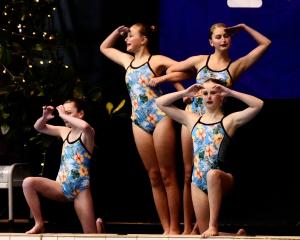
Associate Justice Minister Nicole McKee met licensed firearm holders in Gore and Southland last week to advise them on how to have their say on proposed changes to the 1985 Arms Act.
The deadline for public submissions on the rewrite closed at midnight on Friday.
The Southland branches of the New Zealand Deerstalkers Association, who held the meeting, barred journalists from attending and declined to comment.
In a conversation with The Ensign afterwards, Mrs McKee said gun owners had a ‘‘culture of distrust’’ with the media.
‘‘They’ve constantly been portrayed as the same as criminals, and they’re not, and so they have this distrust,’’ she said.
Mrs McKee said the gun community were also treated like criminals by ‘‘government agency representatives’’, causing them to be protective of their identity and views.
‘‘So, they’d just rather try and keep media away,’’ she said.
The government agencies the Act MP may have been referring to are those that became more restrictive and regulatory of firearms in the wake of the 2019 Christchurch mosque attacks.
The racially-motivated attack was committed by licensed a firearms holder, who shot and killed 51 people using six guns, two of which were semi-automatic rifles.
In breach of his ‘‘A’’ level licence, the offender illegally combined the semi-automatics with 30, 40 and 60-round higher-capacity magazines to carry out the massacre.
As a result, the government banned most semi-automatic weapons and high-capacity magazines and, the following year, the Arms Act was amended, tightening licensing criteria and creating a gun registry.
In November 2022, a unit within the New Zealand police was established to regulate firearms.
According to Mrs McKee and the hunters, farmers and shooters The Ensign spoke to, they either wanted some of these restrictions rolled back or they were afraid of the Act becoming even more constricting.
Southland farmer and Mataura Clay Target Club president Warren Ayers said semi-automatics were invaluable for pest control on farms.
Mr Ayers said to effectively shoot multiple pesky animals in quick succession required a higher-capacity magazine.
‘‘If you want to have a semi-automatic with a large capacity magazine, then you must have an endorsement, which means you have to meet certain criteria by New Zealand police,’’ Mrs McKee explained.
Any child under the supervision of a firearms licence holder can operate a gun, but another farmer and Target Shooting Southland president Quinton Erskine was afraid that would change with the rewrite.
Advocacy group Gun Control NZ included its wish for the minimum age of use of a firearm to be 10, as it is in Australia, in their final submission for the Act.
The group also asked for the minimum age for holding a gun licence to be 18, two years above the age of 16 it is now.
In their respective clubs, both farmers taught teenagers how to shoot and some of their students competed at a national level.
‘‘They’re better to learn in a safe environment than have their friend over the back fence take them out somewhere where, you know, they’re not actually taught any safety,’’ Mr Erskine said.
President of the Mataura Muslim Association (MMA) Mohammad Hafetz, who runs the town’s only mosque, said his community ‘‘tends to’’ oppose the idea of loosening up gun laws.
‘‘There’s still that concern that if automated guns are made more freely available, then there is an ongoing risk to the community,’’ Mr Hafetz said.
New Zealand’s small Muslim community were quite vulnerable due to the way they pray in a congregation, in a small enclosed space, Mr Hafetz said.
The MMA president said thanks to the ‘‘kindness’’ of the government the mosque had received funding to improve the security of its place of worship.
Mr Hafetz said he understood farmers’ need for semi-automatic weapons, but that the current limitations reduced risk.
‘‘I suppose it comes down to how are they going to be monitoring the people who are actually going to be registered to use the semi-automated guns,’’ he said.
In 2024, there were 232,000 licensed firearms owners in New Zealand, which was roughly 4% of the population.
‘‘We need to find the balance, because those 232 licensed firearm owners are not the gangs, they’re not the criminals,’’ Mrs McKee said.












